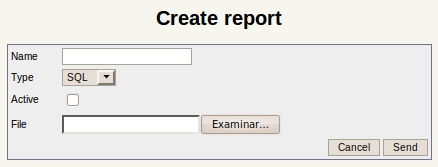Difference between revisions of "Reports"
(→SQL Report) |
(→SQL Report) |
||
| Line 19: | Line 19: | ||
Usually you can have a database and want to generate a report extracting data from it. In this case you should know the table relationship. Tools like [http://www.aquafold.com/ Aqua Data Studio] can help you to create a ER diagram. In this example, will query the database to generate a report with information related to workflow execution: | Usually you can have a database and want to generate a report extracting data from it. In this case you should know the table relationship. Tools like [http://www.aquafold.com/ Aqua Data Studio] can help you to create a ER diagram. In this example, will query the database to generate a report with information related to workflow execution: | ||
| − | <source | + | <source lang="sql"> |
select ti.actorid_ as ti_actorid, pd.name_ as pd_name, ti.name_ as ti_name, ti.start_ as ti_start, ti.end_ as ti_end | select ti.actorid_ as ti_actorid, pd.name_ as pd_name, ti.name_ as ti_name, ti.start_ as ti_start, ti.end_ as ti_end | ||
from JBPM_TASKINSTANCE as ti, JBPM_PROCESSINSTANCE as pi, JBPM_PROCESSDEFINITION as pd | from JBPM_TASKINSTANCE as ti, JBPM_PROCESSINSTANCE as pi, JBPM_PROCESSDEFINITION as pd | ||
Revision as of 15:09, 25 January 2011
In report section you can create and use your own Jasper Reports. Reports are generated in PDF format. Starting from OpenKM 5.1 other formats can be generated.
Add new report
Then make click ![]() new report icon
new report icon
Report can use internally Scripting or SQL. The file to uploading must be .jrxml JasperReport source file. Starting with OpenKM 5.1 you can also upload compiled reports (files with .jasper extension).
SQL Report
Usually you can have a database and want to generate a report extracting data from it. In this case you should know the table relationship. Tools like Aqua Data Studio can help you to create a ER diagram. In this example, will query the database to generate a report with information related to workflow execution:
select ti.actorid_ as ti_actorid, pd.name_ as pd_name, ti.name_ as ti_name, ti.start_ as ti_start, ti.end_ as ti_end
from JBPM_TASKINSTANCE as ti, JBPM_PROCESSINSTANCE as pi, JBPM_PROCESSDEFINITION as pd
where ti.procinst_ = pi.id_ and pi.processdefinition_ = pd.id_
order by ti_actorid, pd_name, ti_name, ti_start, ti_end
Full report is available at File:WorkflowWorkload.jrxml.
Script Report
XPath Report
If you want to create a report which uses an XPath query, use scripting to do the trick. This code will query for locked documents:
import javax.jcr.*;
import javax.jcr.query.*;
import org.apache.jackrabbit.*;
import com.openkm.module.direct.*;
List al = new ArrayList ();
String statement = "/jcr:root/okm:root//element(*,okm:document)[@jcr:lockOwner]/@jcr:lockOwner";
String type = "xpath";
Session jcrSession = DirectRepositoryModule.getSystemSession();
Workspace workspace = jcrSession.getWorkspace();
QueryManager queryManager = workspace.getQueryManager();
Query query = queryManager.createQuery(statement, type);
QueryResult result = query.execute();
for (RowIterator it = result.getRows(); it.hasNext();) {
Map ld = new HashMap();
javax.jcr.query.Row row = it.nextRow();
javax.jcr.Value v = row.getValue(JcrConstants.JCR_LOCKOWNER);
ld.put("owner", v==null?"NULL":v.getString());
v = row.getValue(JcrConstants.JCR_PATH);
ld.put("path", v==null?"NULL":v.getString());
al.add(ld);
}
return al;
You can finde the whole report at File:LockedDocuments.jrxml and File:SubscribedDocuments.jrxml.

